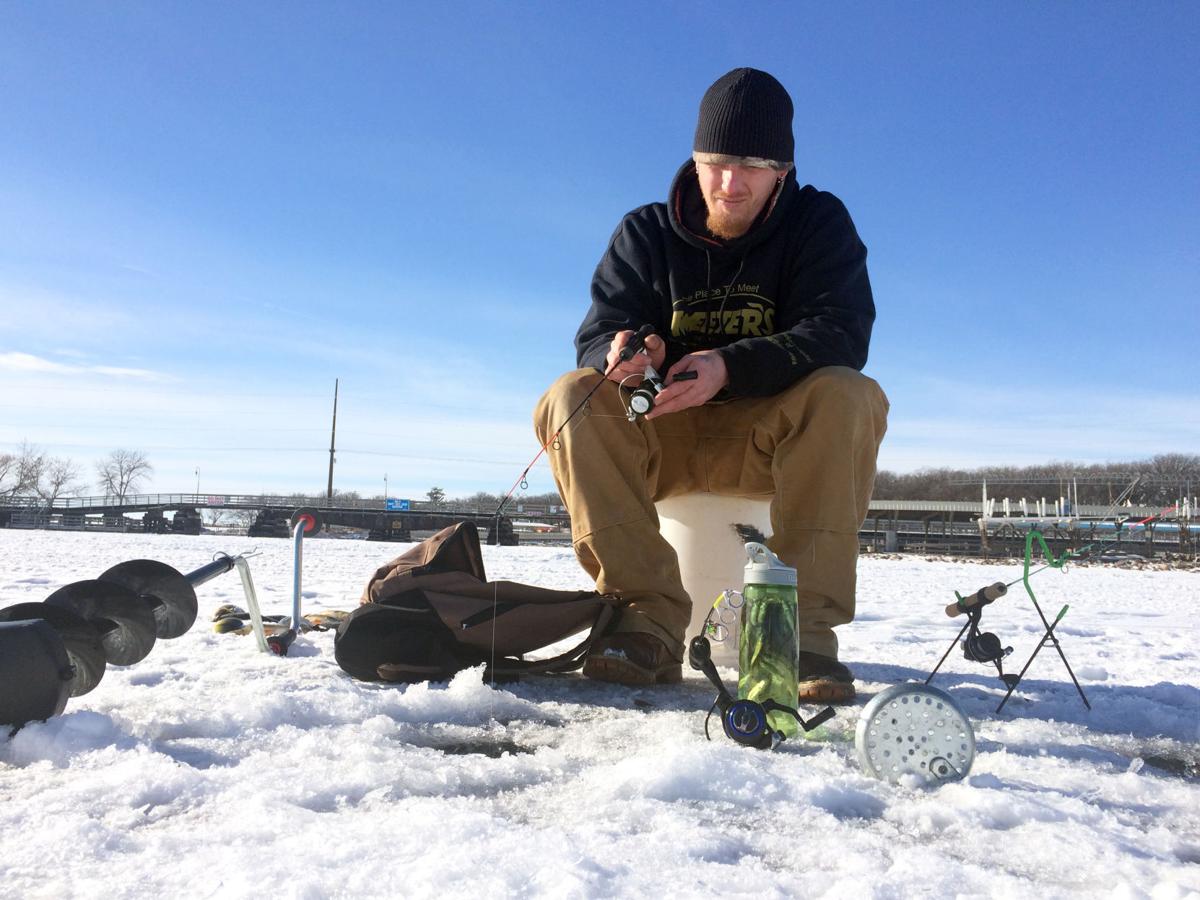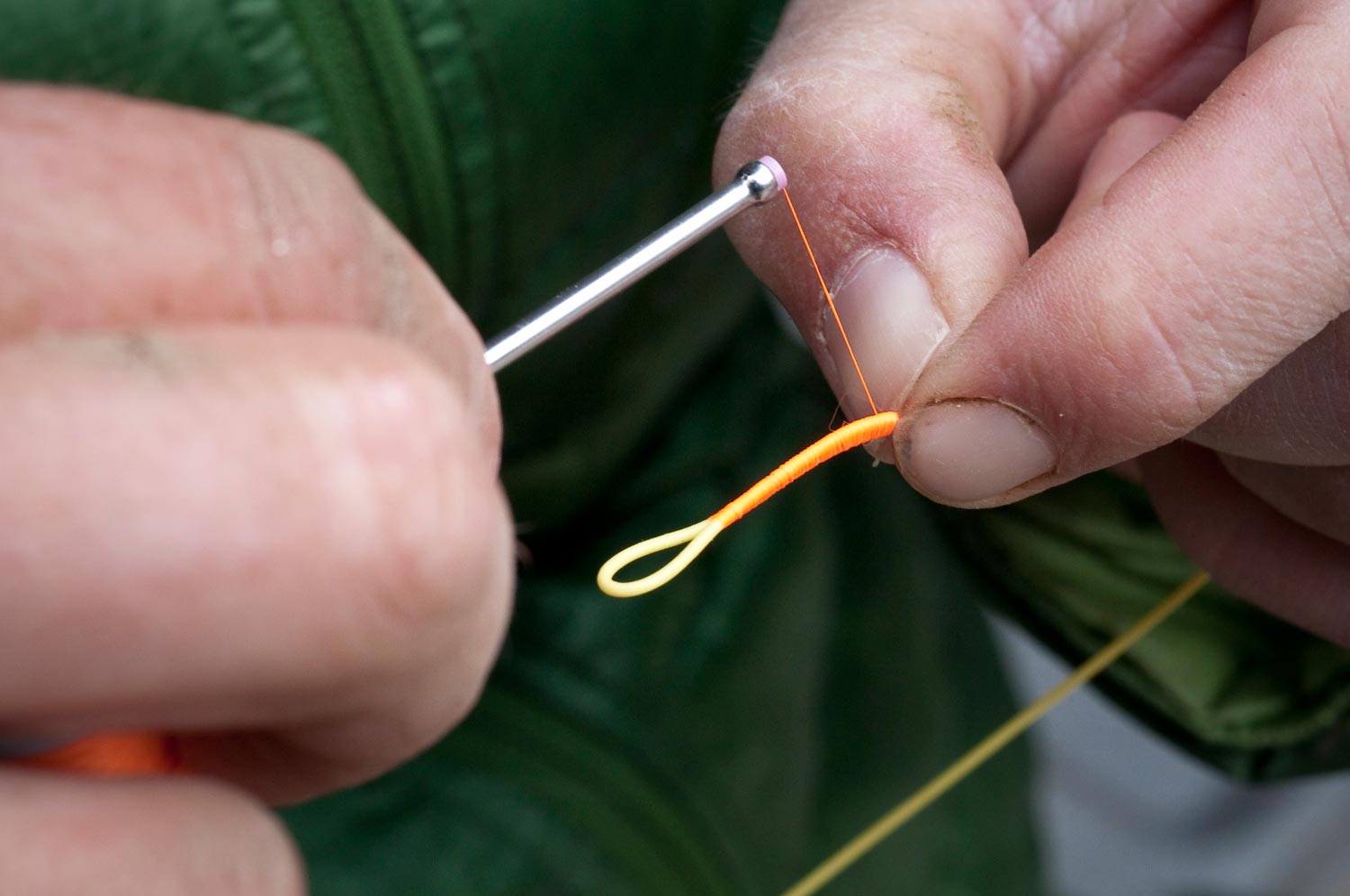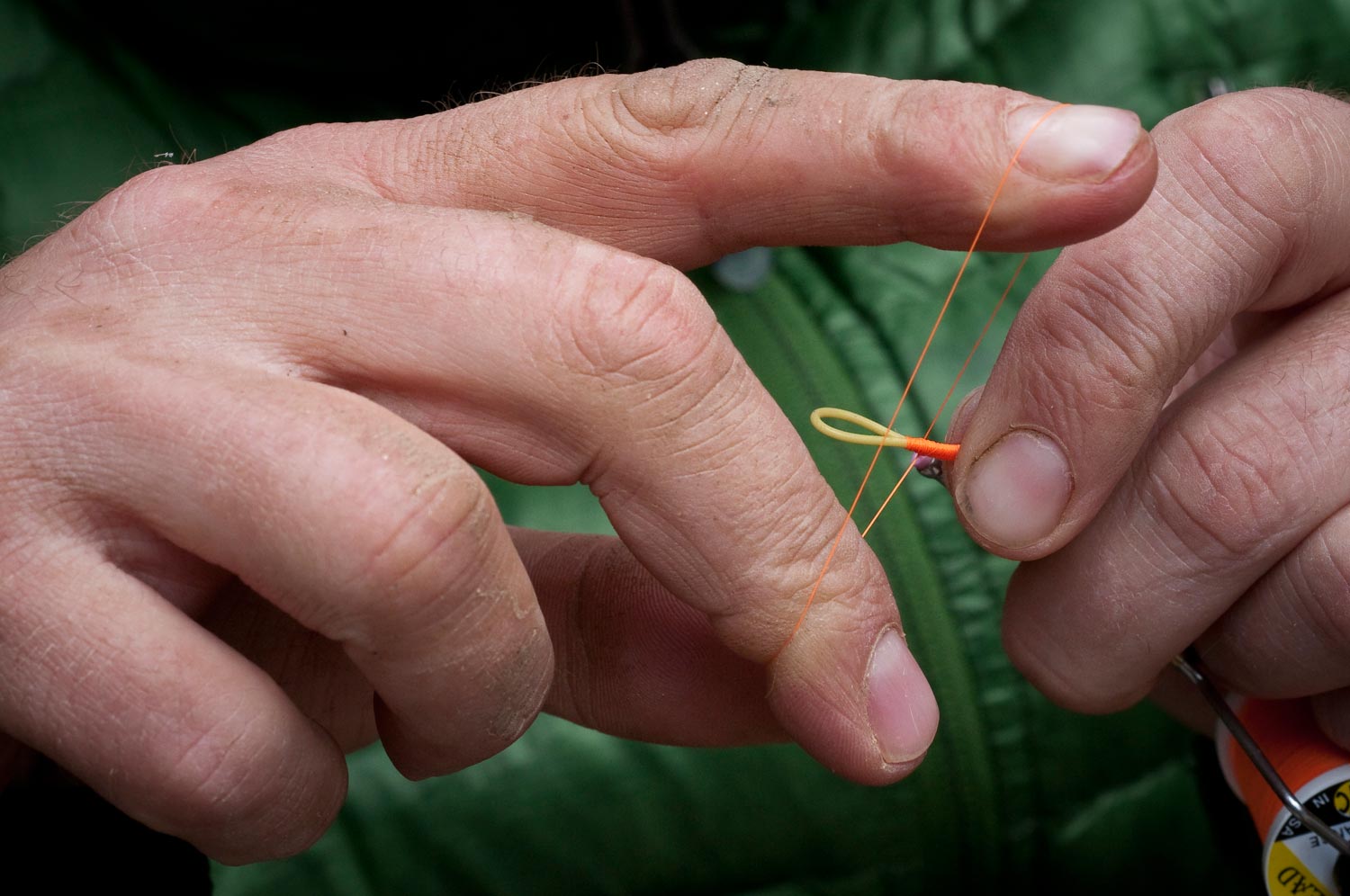How to Start Ice Fishing?
 Fishing is always very exciting. There are many exciting forms of fishing. A different form of fishing is famous in different parts of the world.
Fishing is always very exciting. There are many exciting forms of fishing. A different form of fishing is famous in different parts of the world.
Ice fishing is very famous among the people of the USA and also in Europe.
Some people take ice fishing as an adventure. Though they have a great interest in ice fishing, some people cannot go because they don’t have proper instruction and tips.
In this article, I am going to tell you how you can start ice fishing and some very important tips about fishing in the ice.
How you can start ice fishing

Don’t be sad if you are not getting much information about fishing in the ice. You don’t have to sit inside the house because you don’t know how to get started with ice fishing.
After reading this post, you will know how to start ice fishing and you will also know some important tips and tricks about ice fishing.
Get an ice fishing license

Some ice fishing places require a license for fishing. If you are going to Iceland or northern European countries for ice fishing, they may want to see an ice fishing license from you.
So, before starting your ice fishing journey, it is better to get a license. You can make your own ice fishing license from the local authority.
Find someone to go with you

Going alone for ice fishing is not a great idea. There can be dangers on every step on the ice. You can fall in an ice hole. At that time, there should be someone to pull you outside.
So, make a team with someone who is also interested in ice fishing. You can also go with a group for ice fishing.
Decide where to ice fish

Before going for ice fishing, decide the place where you will go. There are some states in America which will not allow you for ice fishing due to safety reason of yours.
So, before going to a random place, gather information about that place whether they will allow you for ice fishing or not. Also decide the place of ice fishing whether it’s as a pond, lake or river.
Check the weather

Ice fishing can be a lot difficult at night. So, before going to a place, for this reason, know the time of sunset so that you don't get stuck in darkness. During the winter, it is possible to get dark so early. So, be careful about this.
Weather can change dramatically during the winter season. So, take the weather updates before fishing.
Proper clothing

As you are going in such an extreme weather condition, it is important to wear the proper clothing according to the extreme cold situation.
The only thing that can save you from that cold is layers of clothing. Two or three layers of clothing can be the best option. Woolen clothes and synthetic thick clothes can save you from the cold. At the very outer part of your clothing can be a windbreaker.
A windbreaker will resist the cool air from getting inside your clothes and it will also keep you warm inside.
Wear a good quality winter hat to protect your ears and heads from the cold.
Bring the right gear

To enjoy the ice fishing completely and ensure safety you must bring proper fishing gear with you. Without the proper gear, it will become very difficult for you.
Many people bring a spud with them to check the density of the ice where they are fishing. You can also take a spud and check the layer of the ice before stepping on them.
After setting the bait, you may have to wait for long hours for the fish. It will become difficult for you to stand for such a long time. You can take shanties to make your own shelter in the ice fishing ground. It will also protect your fishing holes from strong wind.
You can also bring a portable chair with you and sit on that during the waiting hours.
Take a portable hand warmer in the fishing field. It will make your hands warm if the weather goes worst.
You must have an auger to drill holes in the ice. You will also need an ice scoop to remove the extra ice on the sides of the ice holes.
There are some good rods and reels which are best for ice fishing. Before buying a rod and reel for your ice fishing trip, make sure they are good for the ice fishing condition.
Catching a fish depends a lot on the perfect bait. Bring the perfect bait for the specific fish you want to catch. A little research will help you to find out which bait is perfect for which fish.
Setting up the hole

After you do all the works properly, now it’s time for the most important work, setting up the hole properly.
To set the hole properly, at first you have to choose the right spot to dig the hole. You can survey the lake or river where the fishes are gathering or you can select one of the favorite spots of fishing.
Now dig the hole using an auger. Select a diameter of the hole and dig according to that. After digging the hole, make it smoother with the help of an ice scoop.
After digging the hole, put the reel with bait inside the hole and cover the hole with a plastic bucket head or something like that. The cover will help you to protect the hole from getting more ice in there.
Now you have done all the tough parts and now all you have to do is just wait for the fish to bite on your lure.
Conclusion
Ice fishing is a very adventurous activity. The main thing you need to be a success in this is patience and using proper gears. You also have to be careful about the extremely cold weather conditions. It is better to go with an expert person or in a group if you are doing it for the first time. So, what are you waiting for? Just grab the gears and enjoy the thrill of ice fishing.
Contact

If there are any questions you may contact us using the information below.
Email : flyfisherman@gmail.com
Phone : +1 310-890-6780
Address: 2859 Prospect Valley Road Gardena, CA 90248 or you can see the link to know more contact.
About Us

In the event that you ever wind up Purchasing a new leisure activity, try fishing out! It's unwinding, or with relatives and companions! Our outdoor guide surveys will give you bits of knowledge about the apparatus that is offered in calculating supply at Retailers and Stores.
Fly Fishing Kits for Beginners
 So it seems you are new to fly fishing or thinking about taking up fly fishing. Maybe you have looked at magazines and seen the mountain of gear available and are completely confused by what you should get. After all, you don’t want to spend a lot of money on equipment at the very beginning only to find out you are not cut out to fly fish and want to give up after trying.
So it seems you are new to fly fishing or thinking about taking up fly fishing. Maybe you have looked at magazines and seen the mountain of gear available and are completely confused by what you should get. After all, you don’t want to spend a lot of money on equipment at the very beginning only to find out you are not cut out to fly fish and want to give up after trying.
In the following article, I will talk about the fly fishing kits which are suitable for beginners.
Beginners Fly Fishing Tips

Getting some tips about the kits can help a beginner to improve his fishing skills and help to choose the best. In the following post, I will try to do that so:
Fly Fishing Kits That Suits a Beginner

Well, you can feel lucky as we will check out what you need to start to fly fishing and show the bare minimum amount of money to get you started and not break the bank. One option in starting is to look at fly fishing combo kits for beginners. These combo kits have all of the equipment that is required to get you started. Before we explore what combo kits are available, let’s look at the equipment you will need.
A fly fishing outfit consists of a fly rod, a fly reel, a fly line, backing line, leader material, and flies. This is the minimum number of kit that is required. On the other hand, a cap or hat for sun protection and a pair of sunglasses for eye protection is essential for your safety. Items of clothing and waders we can forget about for now as they are not essential and can be purchased later. So, let’s come to the fly rod, as a beginner, I would recommend a 9-10ft rod which is rated 6-7 weight. The weight is a standard measurement that flies fishing equipment manufacturers have put together to help you make choosing equipment correctly. For this set of configuration, we will require a 6-7 weight line and reel to match. The rod can be from a 2, 3 or 4 piece set up and this will make it easier to carry in vehicles, etc. I would suggest a medium action rod which will allow you reasonable timing to perform the casts.

The reel is the next equipment. For the reel, the lighter it is, the better it should be. It must be able to hold the fly line and about 100ft of backing line. This will allow a hooked fish to be able to run and fight over a fair distance and it will increase the excitement of the game. The best options for this are now large arbor reels. In the large arbor reels, a line can lie in loose turns to reduce line memory. It can cause the line to sit in coils on the water and will slow down your casting. A straight line on the water allows you to have better control of your flies and will make you feel the takes much easier too.
The line you will choose should be a weight-forward floating line. Though there are loads of options in sink density for learning, a full floating line is best. Because it allows easy pickups and the task of learning becomes easier. The weight forward option will allow the rod to load and flex in a much easier way to help the beginner to cast easier and not get frustrated quickly and easily. You can feel you are prepared to take the sport to the next level after using this line type.
Conclusion

As a newbie, I would recommend you to buy one of the beginner fly fishing kits as these have been put together in the right order by manufacturers so they fully match and are perfectly balanced. There are some setups that have loads of extra equipment too for not much cost. So, you can get into the sport very cheaply with a setup that works. Some of these fly fishing kits come fully ready too, which means you can get started right from the start and you don’t have to worry about tying knots and setting up your gear.
How to make a Fly Fishing Leader – Tips for the Beginner

When it comes to setting up your fly rod for fly fishing, the last piece of the puzzle is the process of making a fly fishing leader. As a beginner, you will need to master this fairly well if you don’t want to lose caught fish because of poorly prepared leaders. Like all the terms of fly fishing, it depends on the specific target species to what your leader will look like. We will stick on the process of learning how to trout fish and we will stick to a leader for a 10ft rod of seven weight set up. Making your own leaders for fly fishing and make them well will add extra to your enjoyment of the sport and you will be able to get yourself out of difficult situations when you are having problems with your fly fishing leaders. In the following article, we will talk about making a fly fishing leader.
Making Fly Fishing Leader

In the following post, I will try to help you out by describing the process of making a fly fishing leader:
Process of Making Fly Fishing Leader

Generally speaking, you can make a trout leader setup from lighter material than the fly line. This is possible due to a couple of things, one we want to present our flies with a nice flutter down onto the water and without making a splash and secondly, we need to use something that the trout will find hard to see.
You may wonder how effective a trout’s eyes really are and will they be able to see the lines. For your wonder, I can tell you they have very keen eyesight and can spot a small dark fly in the dead of night. When fishing for sea trout it is better when the night becomes darker and those trout could pick up your fly when it was difficult to even see your hand in front of your face. So, when we are trying to deal with it, we need to decide on line diameter and color.

Again this depends on the target fish. You can catch a trout of 1-2lbs effectively on 3-4lb mono whereas for a trout of 6-8lb you would need something around 5-8lb depending on how hard you want or need to play them. I say “need” as fishing catch and release purpose and it requires that you get the fish to the net as fast as possible and so releasing without exhausting it completely. Some species of fish do not do well when they get exhausted and they will need longer times to gain their strength.
So when we have matched our breaking strain to our target species, next we need to try and match the color of the water. Mono is by far the cheapest material of all, though it can have good success when matching the color and you can keep it small in diameter but fluorocarbon has been proven to be better than mono. However, when it comes to the price, fluoro can be expensive depending on the brand. I will suggest you use both. If there are wild brownies in a trout river who have a scarce food supply both will work at that time because the trout are starving and will take most flies swimming past its nose. However in a river where there is enough amount of food supply then the fluoro will provide better stealth to fool the trout into thinking your fly is food.

I mentioned color and you must take it into account. Not all water has the same type of color. It can vary from brown through greens to blues to clear with so many tones in between them. If you can match the line color to the water then I must say you have a better chance of fooling the trout. As a beginner, I would suggest you carry three spools of mono and they are clear, green and brown. This should be able to cover most situations.
To get a good response on a fly cast a leader should ideally be tapered especially when you are trout fishing with dry flies or small wet flies. The tapered effect of the leader allows the fly to smoothly fall down onto the water so it minimizes splash. When fishing with larger flies, some tapering can be useful but not really necessary as you would usually be fishing with these in large waters with the good flow or in the sea.

When you are starting out it is better not to make the leader too long as this can cause a whole set of problems especially if there is a strong wind. For this reason, I would recommend a leader which is approx 8-9ft long. I would also suggest you only try with one fly but for this article, we shall show you how to tie in a dropper so you can make up leaders of one, two or three flies later without any difficulty. I have seen Scottish anglers on laughs with teams of 4-5 flies but I think this is not necessary unless you are very skilled as one gust of crosswind can turn your leader into a bird's nest.
So the first thing to do is choose the material of your leader. You will find a whole bundle of options but for simplicity and budget, we will use basic clear monofilament of 8lb breaking strain. There are two main processes to make a leader. The first process is you can use one piece of mono and cut it into two pieces then join them to form the dropper. For the other, you just need to use one full-length piece of mono and add a second short length to it to form the dropper.
First method – Take your piece of leader material and measure 9ft. Cut the material in two pieces then tie two blood knots together leaving one tag end about 8 inches long. When you are tightening, make sure to wet the knots so you don’t burn the material and weaken it. Next, you should have a dropper which is sitting proud of the mainline and a tag end. Now, trim the tag end close to the knot.
The second method – Take a piece of leader material that is 8-9ft long and take another piece about 12 inches. Form a three-turn water knot with the two pieces of material that you took around the middle of the long length which is about 4-5ft. Don’t forget to moisten before tightening and trim the tag at Surgeon's Knot end. You can make the dropper sit perpendicular by trimming the lower tag end and to make it sit close to the mainline by trimming the upper.
Conclusion

So there you have a few things to look out for and you also saw how to make a basic leader. When you get more advanced in fly fishing, you can slip in the material of different diameters to form tapered leaders which will give better turnover of the flies. But before doing so, you need to master the basics very well.

